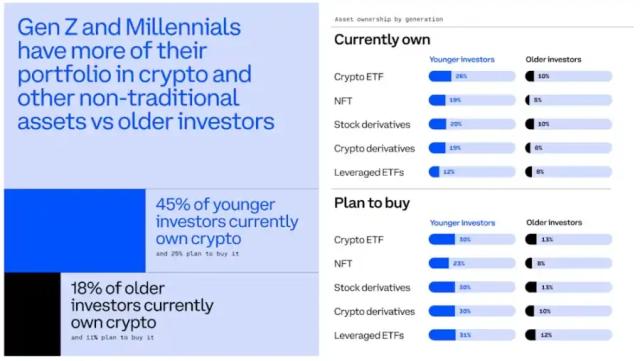Macroeconomic liquidity is having an increasingly greater impact on the cryptocurrency market.
Author: 1912212.eth, Foresight News
On December 17 last year, the cryptocurrency market as a whole showed a downward trend after the hawkish remarks by Powell. By this Tuesday, official data showed that the US employment data was better than expected, and service sector inflation accelerated, causing the market's expectations for a Fed rate cut to cool rapidly, with the general market expecting only one rate cut this year. As a result, Bitcoin fell back below $92,500 from above $100,000, and Ethereum fell from $3,700 to $3,208.
Altcoins were generally hit hard, with some altcoins erasing all their gains since January 1 in the two days of January 7-8. In the 24-hour decline, the DeFi sector saw USUAL drop over 11%, ENA over 6%, and PENDLE over 9%; the meme sector saw WIF and PEOPLE drop over 8%; the public chain second layer sector saw APT, TIA, and ADA drop around 5%, and MOVE drop over 9%. In the AI sector, VIRTUAL dropped over 6%. WLD and ARKM dropped around 5%.
Contract data shows that $556 million was liquidated in the past 24 hours, with $418 million in long positions liquidated, and the largest single liquidation was $15.299 million.
Bitcoin spot ETF data has seen net inflows for 3 consecutive days since January 3, with net inflows exceeding $900 million on January 3 and January 6. Ethereum spot ETF data has been flat, with net outflows on January 2 and January 7, and net inflows on January 3 and January 6, with net inflows slightly higher than net outflows this month. However, according to Trader T data, the US Bitcoin spot ETF saw net outflows of $569 million on January 8, and the Ethereum spot ETF saw net outflows of $159 million, which undoubtedly exacerbated the liquidity shortage in the market.
In terms of stablecoin data, the market cap of USDT has been declining since January 1, but has since rebounded and is currently around $137.5 billion.

USDC data, on the other hand, has been impressive, rising from $43.95 billion to a high of around $46 billion, with net inflows of over $2 billion. USDC is mainly used by US users, which may indicate that US capital is still buying in.

Why is the market price of cryptocurrencies constantly declining?
$650 million worth of Bitcoin from the Silk Road case approved for sale
On the morning of January 9, an official confirmed to DB News that the US Department of Justice has been granted permission to liquidate the 69,370 BTCs (worth about $650 million) seized in the Silk Road case. The Department of Justice requested permission to sell these assets due to the volatility of Bitcoin prices. When asked about the next steps, the Department of Justice spokesperson said: "The government will take the next steps based on the judgment in this case".
In response to this news, Bitcoin briefly fell over 1%, but subsequently quickly rebounded to the $94,000 level.
The US Department of Justice has not yet determined when the sale will take place, and with only 11 days left before Trump's official inauguration, Trump had previously stated that he would not sell any Bitcoin after taking office.
According to the latest data from Arkham, the US government currently holds 198,109 Bitcoins, worth about $18.59 billion, and 54,753 Ethereum, worth about $181.3 million.
Expectations for Fed rate cuts have dropped significantly
On the evening of January 8, the US ADP employment data for December showed an increase of 122,000, less than the market expectation of 140,000, the lowest level since August 2024. The number of initial jobless claims in the US for the week ended January 4 was 201,000, a new low since the week of February 17, 2024. These two data points further indicate the strength of the US market economy, and expectations for rate cuts have further declined.
In the early hours of January 9, the FOMC meeting minutes showed that committee members expect the pace of rate cuts in 2025 to slow significantly, with only 75 basis points of cuts expected for the full year. Market futures prices also indicate that the degree of policy easing in 2025 may be slightly lower than this expectation. Nevertheless, market participants still face considerable uncertainty about the path of the federal funds rate over the next year.
In discussing inflation developments, participants noted that while inflation has moderated significantly from its 2022 peak, it remains elevated. Participants commented that by 2024, the overall pace of inflation will have slowed, with some recent monthly price readings higher than expected. Nevertheless, most indicated that progress on inflation across a broad range of core goods and services remains evident.
Federal Reserve Governor Waller said on Wednesday that while inflation is still above the 2% target at the end of 2024, based on market expectations and short-term inflation data, the US inflation situation is continuing to improve. He expects inflation to continue to decline in 2025, supporting further rate cuts. Waller emphasized that the US economic fundamentals remain strong, with no clear signs of weakening in the labor market. On the number of rate cuts in 2025, Fed officials are divided, ranging from zero to five. He believes that while the slow progress on inflation has raised calls to slow or pause rate cuts, medium-term inflation will continue to move towards the 2% target, and further rate cut policies will be appropriate.
According to CME Fed Watch data: the probability of the Fed keeping rates unchanged in January is 95.2%, and the probability of a 25 basis point rate cut is 4.8%. By March, the probability of keeping the current rate unchanged is 60.9%, the probability of a cumulative 25 basis point rate cut is 37.3%, and the probability of a cumulative 50 basis point rate cut is 1.7%.
After the probability of Fed rate cuts has decreased, the injection of market liquidity has slowed, making it difficult for cryptocurrency prices to rise. The consumer price index inflation data to be released on January 15 may once again cause significant volatility in the cryptocurrency market.
Future Outlook
The correlation between Bitcoin and the S&P 500 index has rebounded to 0.88, indicating that the two markets are re-synchronized, marking a reversal of the previous divergence trend (since Trump's election, Bitcoin has risen 47% while the S&P 500 index has only risen 4%).
Bitwise's European research head Andre Dragosch attributes the renewed correlation to macroeconomic factors, including the Fed's revised rate cut forecast and a stronger US dollar, which continue to put pressure on cryptocurrencies and traditional markets. Although Bitcoin has strong on-chain support, its performance is increasingly influenced by broader market trends, suggesting potential short-term risks.
Matrixport's chart report indicates that fluctuations in global liquidity may put some pressure on Bitcoin, with historical data showing that changes in liquidity typically lead Bitcoin price trends by about 13 weeks. With the US dollar strengthening after Trump's re-election, global liquidity denominated in US dollars is beginning to tighten, suggesting that Bitcoin may enter a consolidation phase in the near term.

However, this consolidation is expected to be only a temporary phenomenon. Overall, risk assets (especially Bitcoin) still exhibit positive long-term potential. Nevertheless, traders should exercise greater caution in a weaker liquidity environment, as these indicators have historically proven to be reliable market indicators.
Blocktrends research head Cauê Oliveira said today that Bitcoin prices fell after hitting a new high at the end of 2024, when institutional investors sold a large amount of Bitcoin, but they are now starting to buy Bitcoin again at prices below $100,000.






